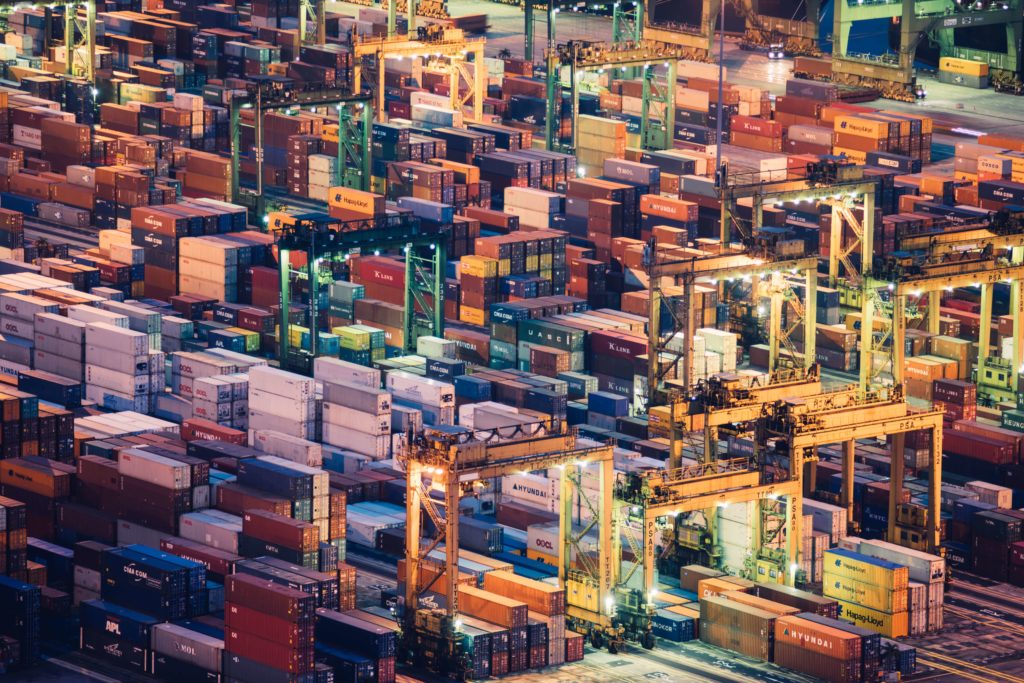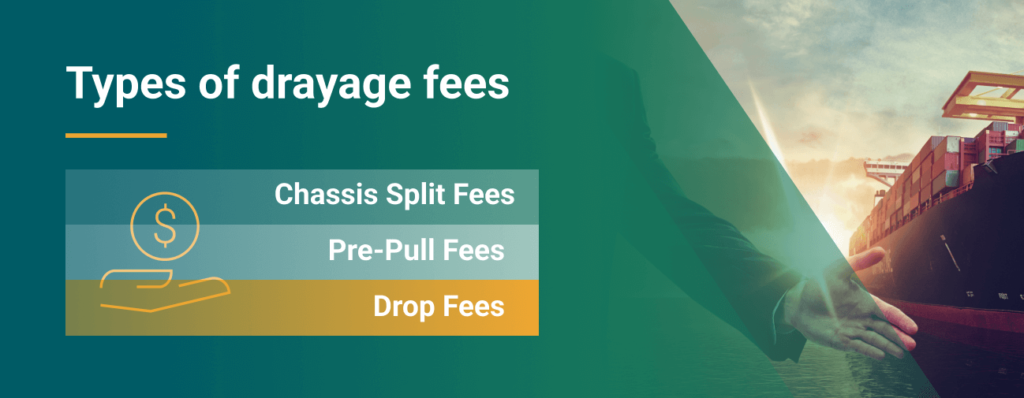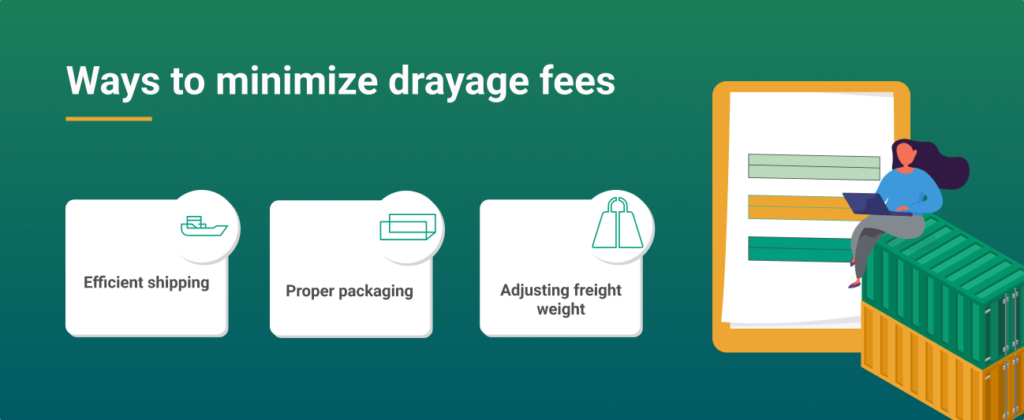Drayage fees in container shipping are a topic of hot debate. You will learn all about how drayage fees are charged and how to minimize these costs.
Here is a summary of what you will read in the blog:
- Drayage is the fees levied for the movement of freight over short distances to prepare them for the next stage of the journey or delivery to their destination.
- There are different types of drayage fees: chassis-split fees, pre-pull fees, and drop fees.
- Drayage fees along with demurrage and detention fees can dramatically increase shipping costs.
- There are multiple ways to reduce your drayage fees.
- On Container xChange you can save money on other expensive fees like demurrage and detention. All with the help of SOCs.
Drayage is an essential part of the modern shipping and logistics industry. The Intermodal Association of North America (IANA) states that globally, 95% of all manufactured goods are moved in containers. And there are more than 60 million drayage movements made each year just in North America.
Of course, this crucial process comes with unavoidable fees, the drayage fees.
if you’ve been in the industry for a while, you’ve undoubtedly run into the expensive drayage fees. In this blog, we’ll take through everything that you need to know about drayage fees and how to reduce them. And, if you want to get a head start on reducing your shipping costs with xChange, click on the banner below.
What are drayage fees?
Once your container has arrived at the port it has to be transported to its destination. This could be a warehouse or a rail terminal for the next leg of its journey. These kinds of journeys are short. And it’s also these journeys where you pay drayage fees. Drayage fees are the charges that you pay for this transportation which involves moving a full container using a truck.
So, let’s say you need to ship a full container load from Hamburg to Mumbai. In this case, your drayage base fee will include the pickup charges for your container from the port and delivery of it to its next destination, and the container storage charges in between.

Calculating drayage fees
The base drayage fees for the transport of your container are charged by weight. This means that there is a base fee charge for every 100 pounds of freight. For example, a shipment that weighs 123 pounds will be rounded and charged at 200 pounds. Some carriers have a minimum fee of 200 pounds per shipment.
Plus, in addition to the freight’s weight, moving containers requires equipment, transportation, and storage availability to house the containers. All these costs also contribute to drayage fees.
As you can see, drayage fees are expensive.
Drayage fees have been the cause of much debate in the US. Once they start piling up, they can derail your shipping budgets quickly.
But drayage fees aren’t the only fees that can make your budget tipple over. If you’ve been in business for a while, you’ve undoubtedly run into demurrage and detention. And if you’ve been unlucky, you also know that demurrage and detention can mount up and cost you more than the value of the container itself. Container xChange helps you avoid exactly these fees. With SOC containers you can wave goodbye to demurrage and detention. How?
SOCs or shipper-owned containers are owned by shippers who can be either the supplier or the consigneeWhat is a consignee? When transporting freight (by ocean, air, or land), there are two parties involved — one who is shipping and the other who is receiving the freight. The recipient of the goods b... More. The biggest advantage of using SOCs is the lack of demurrage and detention charges that allow long-term usage of the containers. With xChange, finding SOCs is simple. You can find SOCs on the xChange leasing platform directly from our certified members. To see how it’s done, click on the banner below.
There’re many ways in which drayage fees are calculated. In the section below, you will learn about the different types of drayage fees.
Types of drayage fees in container shipping
Chassis Split Fees
ChassisWhat is a chassis? Chassis, in freight & logistics, refers to a skeleton framework with wheels on it used to move containers. It is also called intermodal chassis or container chassis. Similar to ... More split fees are charged when a transporting chassisWhat is a chassis? Chassis, in freight & logistics, refers to a skeleton framework with wheels on it used to move containers. It is also called intermodal chassis or container chassis. Similar to ... More is not available where a container has been unloaded. This fee covers the cost of taking a chassisWhat is a chassis? Chassis, in freight & logistics, refers to a skeleton framework with wheels on it used to move containers. It is also called intermodal chassis or container chassis. Similar to ... More to the container’s location.
Pre-Pull Fees
Pre-pull fees are incurred when a container has been picked up from a port or ramp but isn’t loaded or delivered on the same day. This fee covers the carrier’s cost of storing the container in the carrier’s yard.
Drop Fees
Drop fees are incurred when truckers drop off containers at a warehouse and return later to pick up the emptied containers, as opposed to live loading and unloading of the containers.

Why shipping costs stack up: Drayage, demurrage, and detention
Delays are a big problem in the shipping industry. And they come with big costs. Here, we’ll discuss how drayage fees along with demurrage and detention charges increase your shipping costs.
Drayage fees
In container shipping, you never know if boxes will be held up in customs, delayed on the ship, or get stuck at port. In the meantime, truckers, customers, and carriers are impatiently waiting. And that comes with a heavy price tag that gets added to your drayage fees.
Drayage fees involve the moving charges, the charges for freight handling, and coordination. Arranging drayage itself takes time. This means that if you are not careful, your containers won’t be returned on time. And that can add to your demurrage and detention charges. In the next section, we get into the details of demurrage and detention charges.
Demurrage and detention charges
Drayage fees aren’t the only ones that can quickly drain your accounts. It’s pretty much impossible to talk about extra costs in this industry, and not think about demurrage and detention charges. These charges can exceed the cost of the container itself.
The reason these costs exist is to encourage container users to return the containers within the allocated “free days”. However, in practice, there are many situations that are impossible to fully control. For example, certain goods require a longer than expected time to clear customs. Or, if the container arrives late, there’s a chance that there’ll be no space available at the factory or the warehouse it’s headed to.
xChange digitizes container logistics that help you reduce your shipping costs. The leasing platform makes empty container repositioning easier and smoother. To see how simply choose ‘I want to use containers!’ below. Then, put in your pickup and drop-off locations, and hit search. You’ll then get a list of available containers exactly where you need them.
Reducing drayage fees in container shipping
When it comes to container shipping costs, things may look extremely bleak, especially drayage. They’re not. If you’re careful, there are things you can do to reduce your drayage fees in container shipping. Here they are:
Proper packaging
In the shipping industry packaging matters as it can affect shipping costs. Non-fragile items that are easier for the contractor to move (such as those in crates or square boxes) cost the least. Items that require special handling tend to be charged significantly more. To reduce the need for special handling, pack your freight to the specifications recommended and eliminate the need for special handling.
Adjusting freight weight
Weight is one of the primary determinants of your drayage fees. Any weight in excess of 100-pound increments is rounded off to the next 100 pounds and charged at the rate of the higher increment. So, keep freight weight low and combine shipments in a pallet or container. Combining shipments avoids being charged a minimum weight fee.
Efficient shipping
In shipping, time is money. Every second counts because it costs. That’s why ensuring timely and efficient shipping saves you money. Opt for a carrier that allows you to load or unload your goods in one go or in as few batches as possible. This ensures the time taken to load/unload and move the freight is minimum. The simpler the shipping delivery is, the lower the chance of mishaps and additional charges as a result.
Using shipper-owned-containers (SOCs)
By using SOC containers, also known as Shipper-Owned Containers, you can avoid other expensive charges such as demurrage and detention. How? One-way lease boxes from a container owner who needs to reposition their empty containers. This, in turn, gives you bargaining power – resulting in more free days and lower per diem charges.

On Container xChange, you can find SOCs in the location of your choice easily and at good prices. This is because our network is extensive. Click on the banner below and SOCs on xChange today.
Saving on fees with xChange
There is a range of reasons that can cause delays in the movement of containers. They can get stuck in the terminals for an infinitely long time because of port congestion or a shortage of chassisWhat is a chassis? Chassis, in freight & logistics, refers to a skeleton framework with wheels on it used to move containers. It is also called intermodal chassis or container chassis. Similar to ... More. In such situations, it can be difficult to avoid extra surcharges.
With so many uncertainties, the key to avoiding as many extra payments as possible is to know if any changes have occurred. Staying on top of your shipments allows you to make changes ahead of time. If you know that the ETAWhat is estimated time of arrival? Estimated time of arrival, commonly known as ETA, is a frequently used term globally to denote the time of coming. In the shipping & logistics industry, it is ... More has changed, you can contact the trucker, the customers, and even renegotiate free days or fees ahead of time.
One way of doing that is by avoiding leasing containers through carriers – and digitizing your container logistics. With Container xChange you get all the information about your shipments. You can check the status of the shipments through detailed tracking and trace reports. You can get notifications when there’s a container event such as changing ETA’s, pick-up, and returns. This gives you the best possible overview of all your containers and lets you focus on the containers that urgently need your attention.
There are other xChange options that you can use to save your shipping costs. You can also use the xChange leasing platform to book yourself containers in the location of your choice and at prices that you agree with. We have containers in more than 2500+ locations around the world. Click on the banner below and start saving on your shipping costs.
Drayage fees: FAQs
What are drayage costs?
Drayage is the fee associated with the movement of freight over short distances to prepare them for the next stage of the journey or delivery to their destination.
How is drayage cost calculated?
Drayage fees are calculated based on weight. There’s a base fee that’s charged for every 100 pounds of freight.
What does drayage freight mean?
Drayage freight means the transport of freight from a port to its destination. In the container shipping industry, it refers specifically to short distance movements that are part of the supply chain process.






